Abstract
STUDY OBJECTIVE--To examine the impact of a comprehensive periodic health examination programme on health care utilisation and costs in a working population. DESIGN--A cohort method was used to observe the trends in health care utilisation and costs for a group of local government employees from 1 February 1986 until 31 January 1992, during which time (in 1988) a comprehensive periodic health examination programme had been introduced. Health care utilisation was measured by a claim rate per employee (number of claims in a year divided by number of employees) and a utilisation rate per 100 employees (number of employees who submitted at least one claim in a year divided by number of employees x 100). Health care costs were measured by claim costs per employee (total cost of claims divided by number of employees). National and prefectural changes in per capita health care costs were used for the adjustment of claim costs. Internal comparisons were made in relation to the intensiveness of the periodic health examinations administered before the introduction of the comprehensive programme. SETTING--Fukuoka Prefecture, Japan. PARTICIPANTS--A total of 19,146 local government employees (12,455 men, 6691 women) who worked in small cities, towns, and villages in Fukuoka Prefecture throughout the study period participated. MAIN RESULTS--Both the claim and utilisation rates showed an increase in 1988 when the comprehensive programme was introduced. After adjustment for the national changes in per capita health care costs and the aging effect of the study participants, substantial increases in claim costs were noted after introduction of the comprehensive programme. The programme had a greater but short term effect of increasing the health care utilisation of those who had received less intensive periodic health examinations before 1988, but no similar effect on claim costs was noted. CONCLUSIONS--The comprehensive programme had some role in increasing health care utilisation and costs. Its effect on costs was confirmed when the general population or another population was used as a reference. When comparisons were made internally, the comprehensive programme was seen to have had a greater but short term effect of increasing the utilisation of those who had previously received less intensive health examinations to equalise the health care utilisation and costs within the study population.
Full text
PDF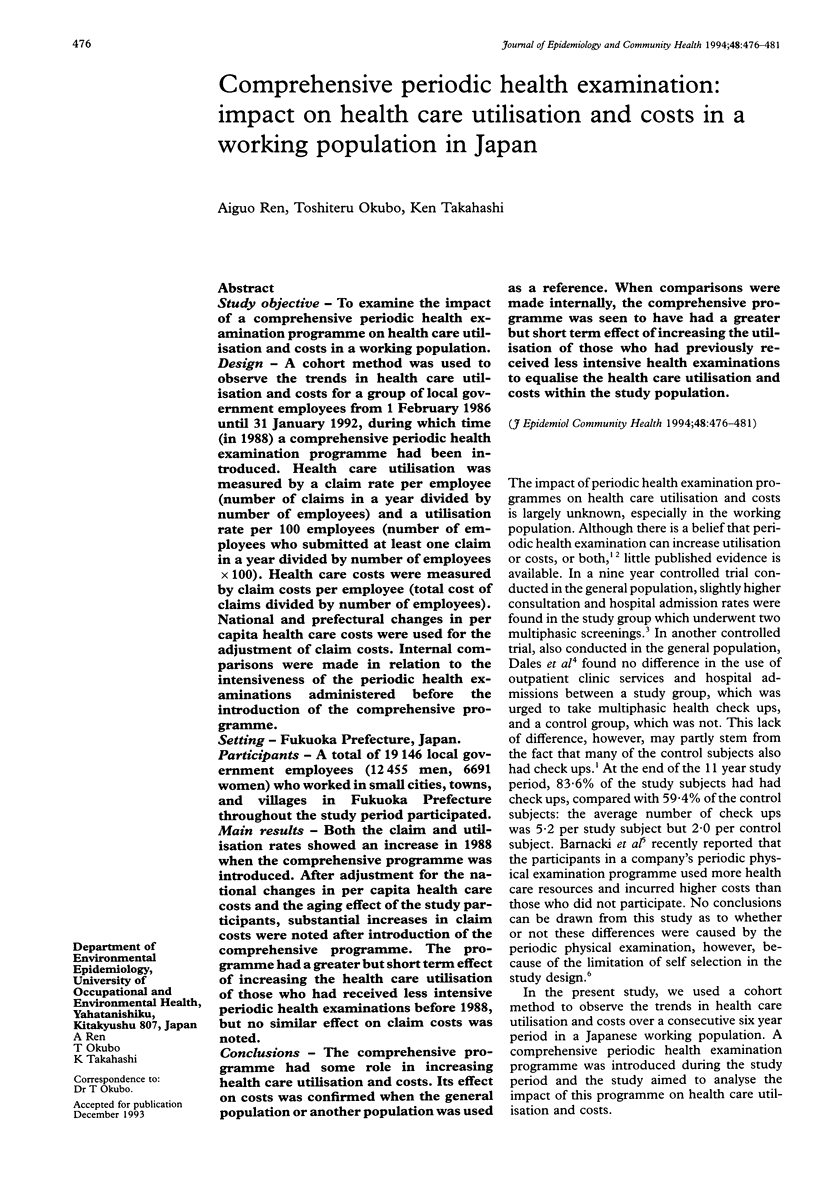
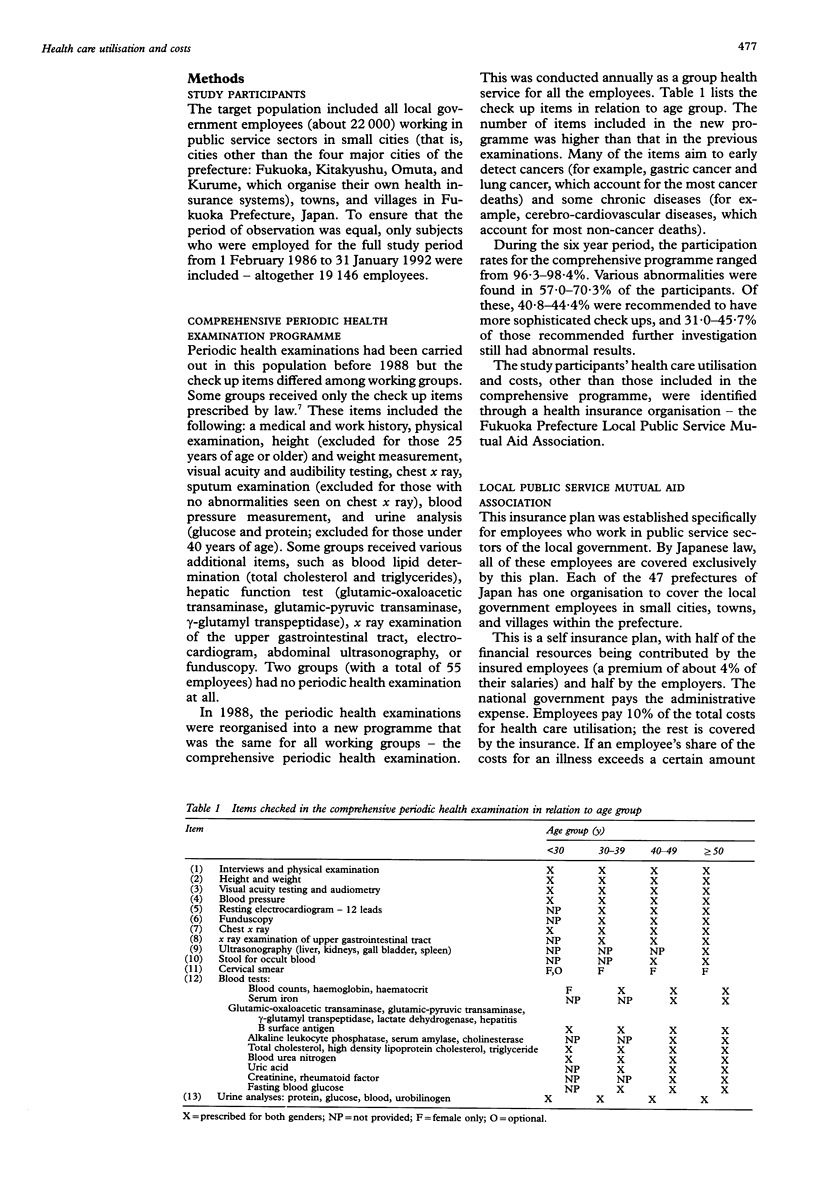
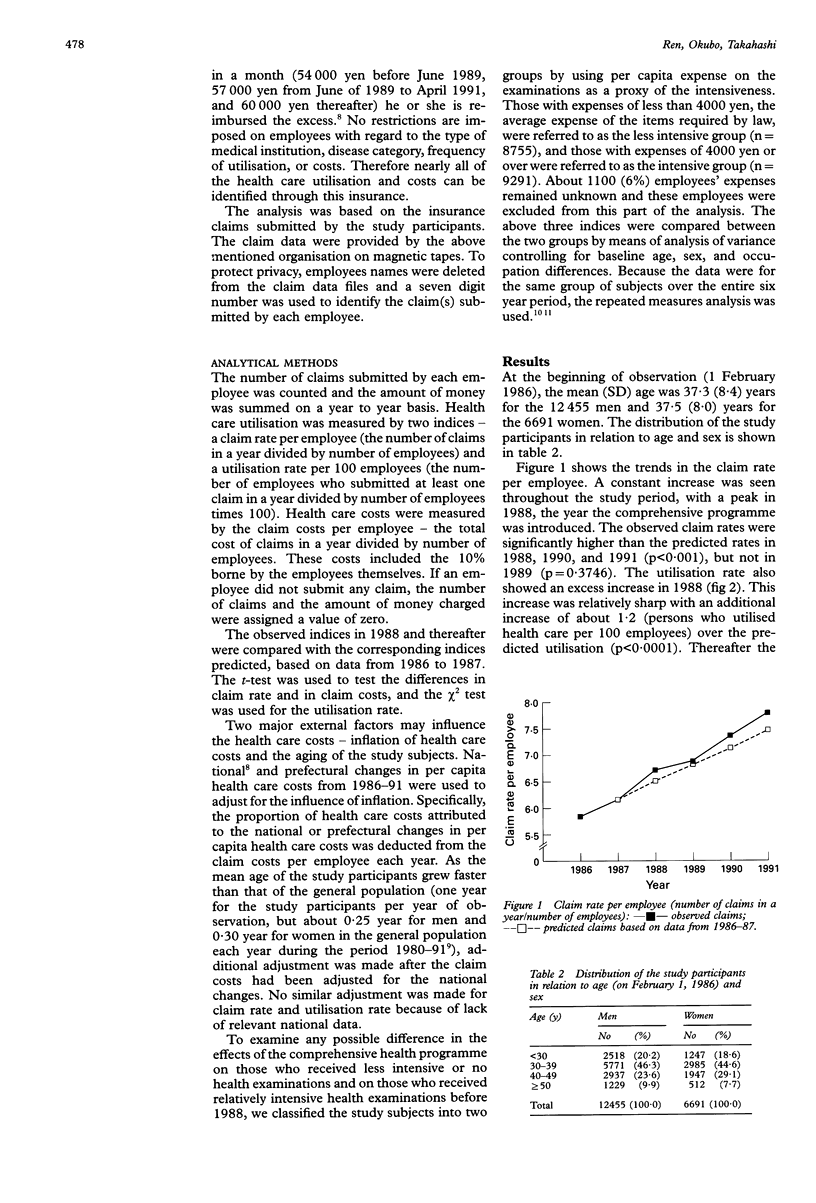
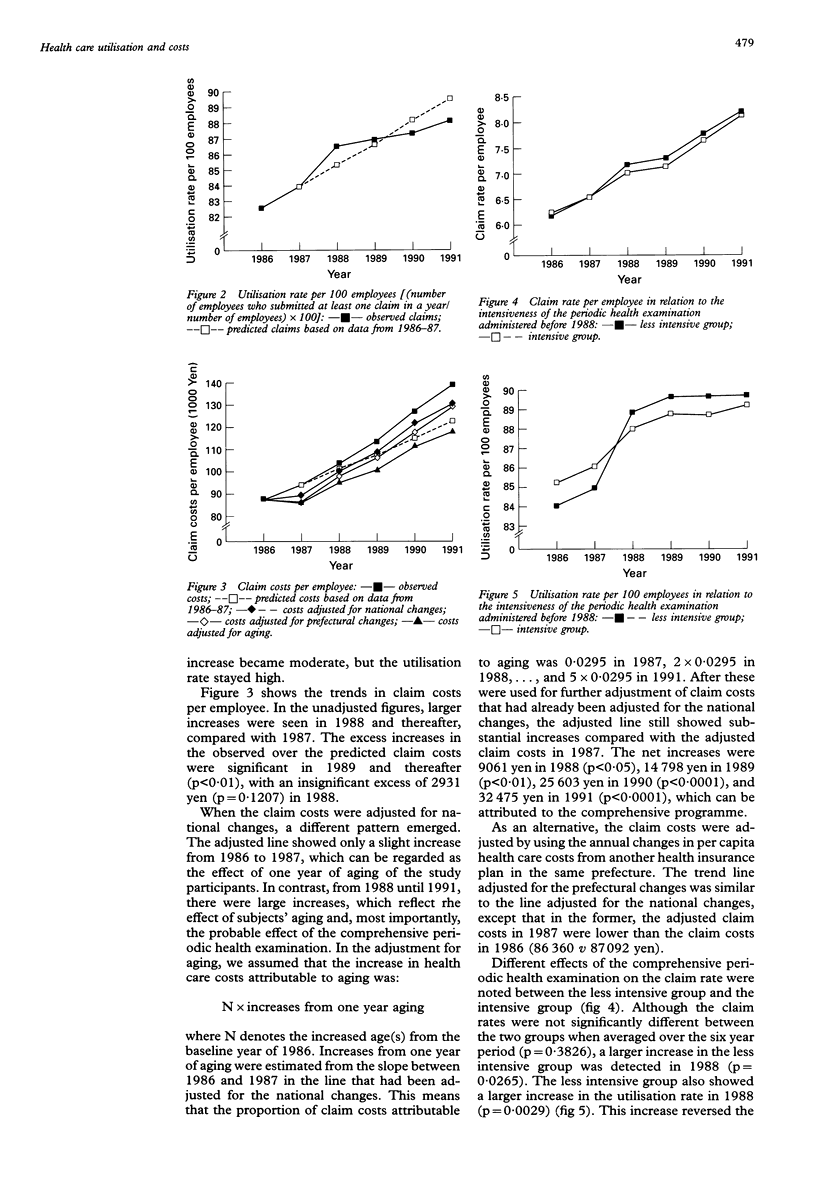
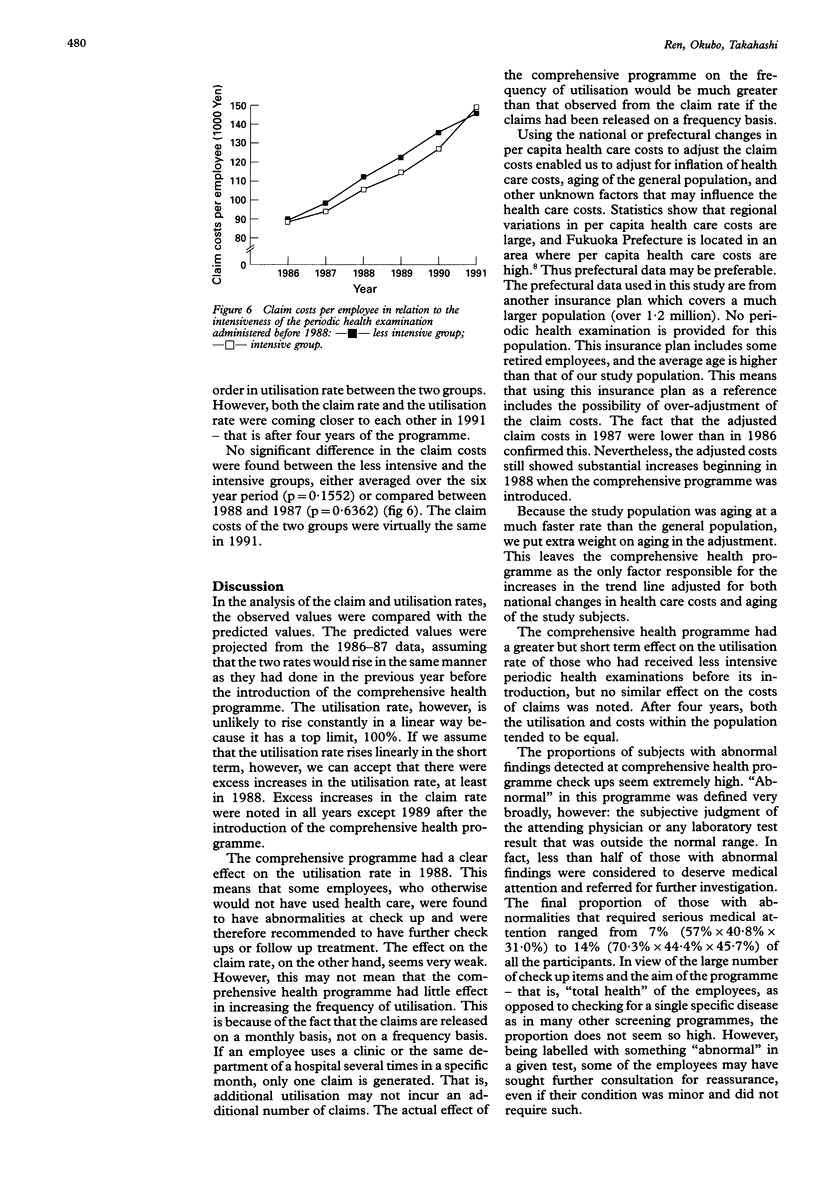
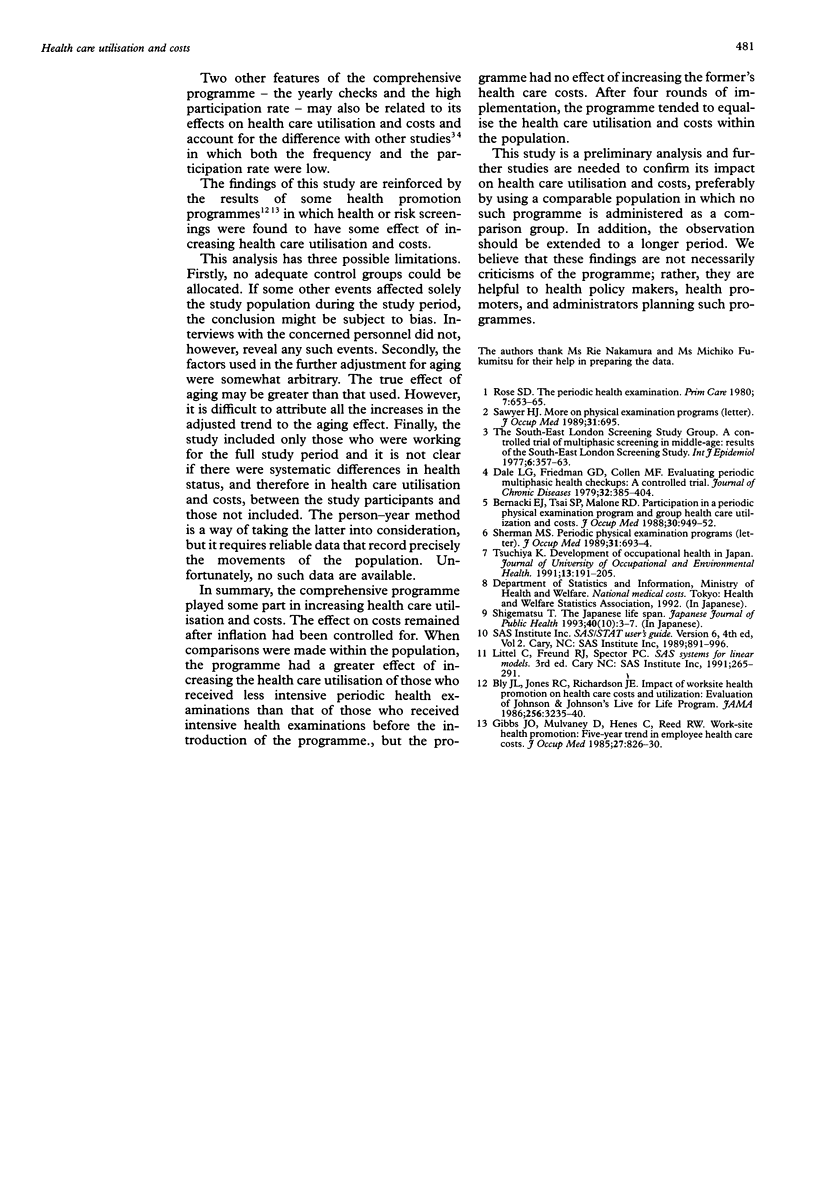
Selected References
These references are in PubMed. This may not be the complete list of references from this article.
- Bernacki E. J., Tsai S. P., Malone R. D. Participation in a periodic physical examination program and group health care utilization and costs. J Occup Med. 1988 Dec;30(12):949–952. doi: 10.1097/00043764-198812000-00013. [DOI] [PubMed] [Google Scholar]
- Bly J. L., Jones R. C., Richardson J. E. Impact of worksite health promotion on health care costs and utilization. Evaluation of Johnson & Johnson's Live for Life program. JAMA. 1986 Dec 19;256(23):3235–3240. [PubMed] [Google Scholar]
- Dales L. G., Friedman G. D., Collen M. F. Evaluating periodic multiphasic health checkups: a controlled trial. J Chronic Dis. 1979;32(5):385–404. doi: 10.1016/0021-9681(79)90080-8. [DOI] [PubMed] [Google Scholar]
- Gibbs J. O., Mulvaney D., Henes C., Reed R. W. Work-site health promotion. Five-year trend in employee health care costs. J Occup Med. 1985 Nov;27(11):826–830. [PubMed] [Google Scholar]
- Ohtani A. [On the "emergency life-saving technician's law"]. Nihon Koshu Eisei Zasshi. 1993 Jan;40(1):3–8. [PubMed] [Google Scholar]
- Rose S. D. The periodic health examination. Prim Care. 1980 Dec;7(4):653–665. [PubMed] [Google Scholar]
- Sherman M. S. Periodic physical examination programs. J Occup Med. 1989 Aug;31(8):693–695. doi: 10.1097/00043764-198908000-00016. [DOI] [PubMed] [Google Scholar]
- Tsuchiya K. Development of occupational health in Japan. J UOEH. 1991 Sep 1;13(3):191–205. doi: 10.7888/juoeh.13.191. [DOI] [PubMed] [Google Scholar]


